A sobering week in spaceflight saw the first in-flight fatality in a commercial space programme, as Virgin Galactic lost a test pilot with the breakup of its SpaceShipTwo over the Nevada desert, along with a spectacular but non-fatal launch failure of an uncrewed International Space Station resupply mission. After that ISS mission failure, no less an authority than NASA human spaceflight director William Gerstenmaier took pains to remind everybody that launching rockets is a “tough business” – and warned against complacency as NASA and its private contractors prepare to return to the business of launching American astronauts to orbit.
Now is a good time to remember those astronauts who have perished in the pursuit of humankind’s loftiest – or at least highest-altitude – ambition.
1. The dubious distinction of being the only fatalities in space – that is, above the internationally agreed 100km (62 mile) boundary – are the crew of Soyuz 11. On 30 June 1971, cosmonauts Georgi Dobrovolski, Vladislav Volkov and Viktor Patsayev died when their spacecraft lost pressure sometime after undocking from the USSR’s Salyut 1 space station after three weeks in orbit. They are depicted left to right on this memorial Soviet postage stamp, which reads “A feat by heroes will live on for centuries.”
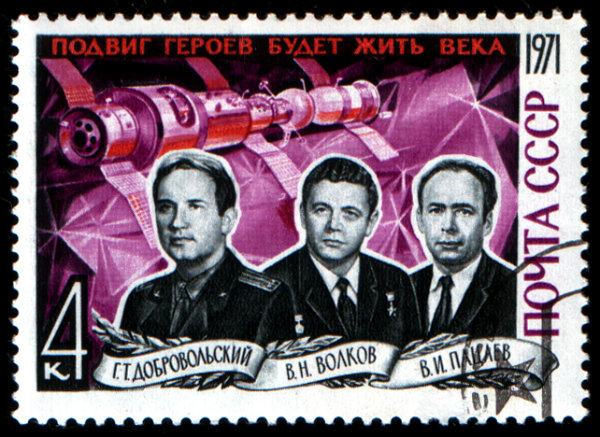
2. The 24 April 1967 death of cosmonaut Vladimir Komarov – shown here on another Soviet postage stamp issued in 1964 – was the first in an actual space flight. His one-day Soyuz 1 mission ended in tragedy with the failure of his re-entry parachute and a crash landing.

3. Later the same year, US Air Force test pilot Major Michael Adams lost control of his X-15 owing to an electrical disturbance. He recovered from a spin but ended up in a Mach 4.7 inverted dive, and the aircraft broke up in increasingly thick air, killing Adams on impact with the desert floor at Delamar Lake, Nevada. Adams was posthumously awarded astronaut wings - during the 15 November 1967 flight he reached a peak altitude of 266,000ft (81,000m), surpassing the then-US definition of the edge of space: 50 miles (80.5km).

Michael Adams
NASA
4. Americans old enough to remember the loss of Space Shuttle Challenger remember where they were when they learned of the 28 January 1986 disaster, such was the emotional force of its destruction 73s after lift-off, with the loss of all seven crew. In the worst possible situation on the ground, tens of thousands of those Americans were schoolchildren watching the launch live in their classrooms or assembly halls, as the crew included Christa McAuliffe, a schoolteacher whose mission was to turn the Shuttle into an orbiting classroom. The nation was rightly proud of the Shuttle programme; not only was it a stunning technical achievement, it had restored confidence in a space programme that many citizens felt had thrown away the momentum of the Apollo years in an aimless drift through a late 1970s when, as today, the USA actually went some time with no human launch capability. Arguably, the nation was suffering a crisis of confidence through late 1970s – post-Nixon and Vietnam malaise, economic slump, Iranian hostage crisis, etc – so it is worth remembering just how big a lift it was to see the Shuttle fly, finally, in 1981.
Sadly, the Challenger disaster revealed design shortcomings, notably the piggyback configuration that allowed no scope for crew escape in the event of rocket malfunction. And, to remind us that death is not instant even in a giant fireball, at least some of the crew – Greg Jarvis, Ronald McNair, Ellison Onizuka, Judith Resnik, Michael Smith, McAuliffe and Dick Scobee – appear to have attempted to activate their emergency oxygen supplies, suggesting they survived the explosion that doomed their mission and died on impact with the sea off of Cape Canaveral.
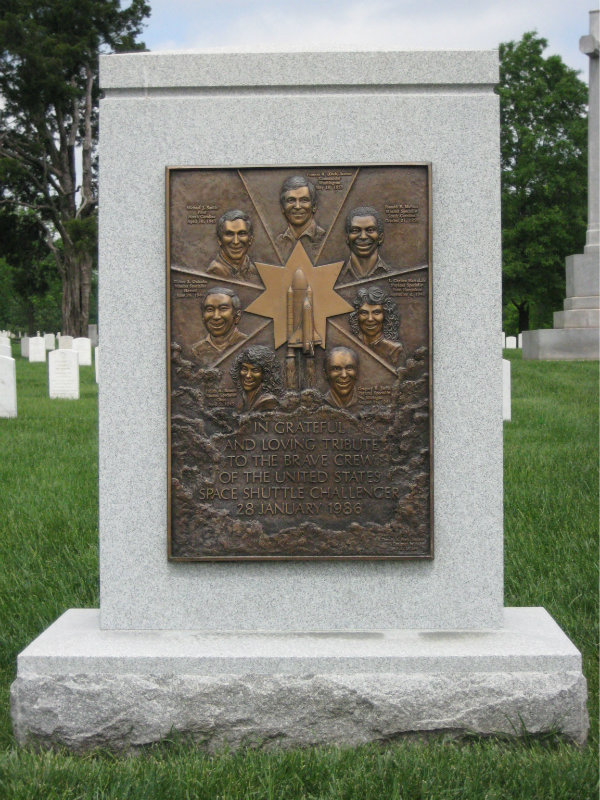
Challenger memorial, Arlington National Cemetery
5. One of the shortcomings of the Shuttle was the fragility of the heat shield tiles needed to protect it from the severe friction heat of re-entry, which were easily damaged – including by fragments of the insulating foam coating the main cryogenic fuel tank strapped to the orbiter’s belly for launch. With such a delicate system, it may in retrospect seem inevitable to have lost a Shuttle on re-entry. But the 1 February 2003 total loss of Columbia, coming home after its otherwise successful STS-107 mission, nevertheless struck a blow to programme confidence, from which it never really recovered. For each subsequent flight, media interest seemed as much focused on NASA’s painstaking analysis of launch video, to look for possible foam strikes, as on mission objectives. Exotic USAF telescopes were even believed to be employed to inspect the underside of orbiting Shuttles from the ground. But what would be done about serious tile damage once the Shuttle was aloft remained an unanswered question, and the 2011 retirement of a fleet that had lost two of its five craft was probably long overdue. The STS-107 crew included Americans Rick Husband, William McCool, Michael Anderson, David Brown, Kalpana Chawla and Laurel Clark, along with Israeli astronaut Ilan Ramon – after whom the annual international Ilan Ramon Space Conference is named in memory.
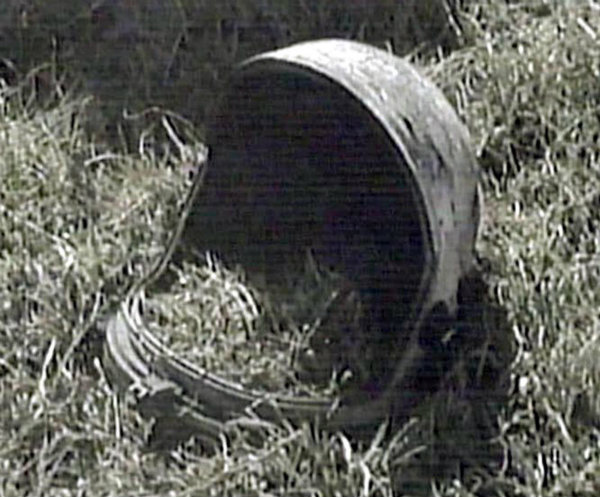
'Debris' from Columbia breakup
Rex Features
6. But for many, the greatest tragedy in spaceflight was the loss of the Apollo 1 crew in a ground training accident on 27 January 1967. In their capsule practising the launch sequence that was to have taken them to space a month later, Gus Grissom, Edward White and Roger Chaffee (pictured left to right below) died when an electrical fault set alight the capsule’s pure oxygen atmosphere. At least one contemporary news report used the term “flash fire”, but the men did not die “instantly” in a blaze so intense it ruptured the shell of the capsule. Indeed, the crew had expressed concerns about fire safety. The best that can be said is that the tragedy led to a hiatus in a manned spaceflight programme that had been moving forward at such breakneck speed (President Kennedy’s “end of the decade” challenge was approaching) that spacecraft design and construction was racing ahead of anything resembling modern safety assessment. The first manned Apollo flight – Apollo 7 – did not come until October 1968.

Grissom, White and Chaffee
NASA
7. To many minds, Grissom was the ultimate manifestation of “the right stuff”. He in any case had seen his share of danger before Apollo. After Alan Shepard, Grissom was the second American to go to space – but he barely survived his 1961 suborbital Mercury-Redstone 4 flight, as the capsule’s hatch blew off accidentally after splashdown. The capsule itself (pictured) was lost and Grissom nearly so, as his spacesuit filled with water and the Navy recovery team barely got him in a harness and winched to safety.
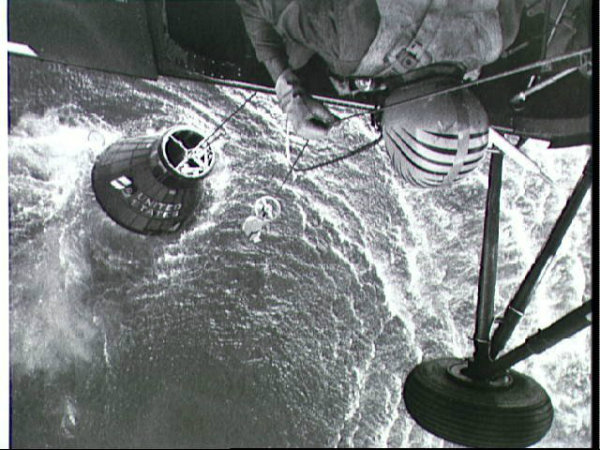
NASA
8. Had the Apollo programme not been running in the poisoned atmosphere of a Cold War superpower space race, an earlier Soviet accident might have informed US designers of the dangers of high oxygen concentrations, which were a way to overcome the challenge of managing nitrogen levels and also allowed lower air pressures, a particular benefit inside space suits. Training in a low-pressure chamber, cosmonaut Valentin Bondarenko died in a fire – the immediate cause of which appears to have been his own carelessness – in 1961. The Soviets, however, kept the incident quiet.
9. Of many non-fatal incidents, at least one is worth a mention. Preceding Koramov’s 1967 crash landing tragedy, the 18 March 1965 Voskhod 2 mission nearly ended in disaster twice. First, after making the first-ever spacewalk, Alexei Leonov (pictured in 2011 in Moscow to mark the 50th anniversary of Yuri Gagarin’s pioneering first spaceflight, with Valentina Tereshkova, the first woman in space) found that his spacesuit had inflated to such a size outside the capsule that he could not get back in through the hatch. Letting out air, he suffered the bends but got back inside. Alas, in the then overly cramped capsule, he and Pavel Belyayev struggled to operate the spacecraft and missed their re-entry path, landing way off course in dense forest. Waiting for recovery, the cosmonauts spent a day inside the capsule, which protected them from local bears and wolves.
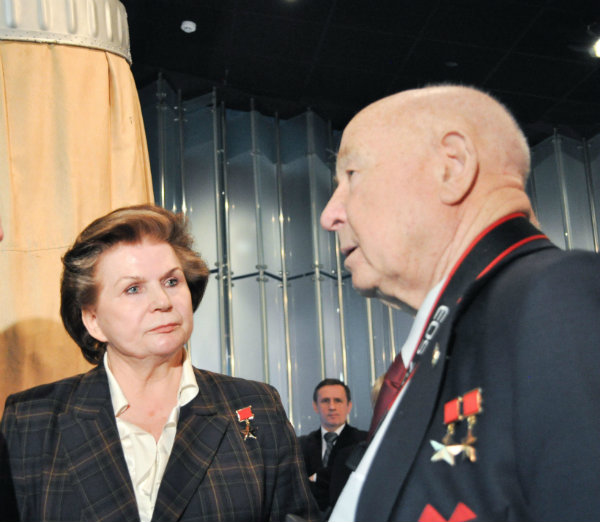
Valentina Tereshkova, Alexei Leonov
NASA
10. And, one fictional account of space tragedy also warrants a mention. In late 1969, just months after the Apollo 11 mission but long before Apollo 13 provided a real-life version, American cinema audiences thrilled to Marooned, starring Gregory Peck and Gene Hackman. This story of an Apollo-style mission gone wrong follows, as the title suggests, the drama of attempting to recover a three-man crew stuck in orbit. Without giving away too much, one is lost (think Capt Scott in Antarctica) but rescue is ultimately achieved – with some help from a passing Soviet mission and a cosmonaut desperately trying to encourage the oxygen-starved Americans to come across to his tiny ship.
Whether or not that film moment inspired calm, scientific heads in the USA and USSR to overcome their leaders’ Cold War antagonism and push for the 1975 Apollo-Soyuz joint test project is hard to say, but in any case it’s nice to look back and recognise that even at the height of superpower paranoia stand-off, Hollywood could actually take an inspired view of a future where co-operation in space would be ordinary.
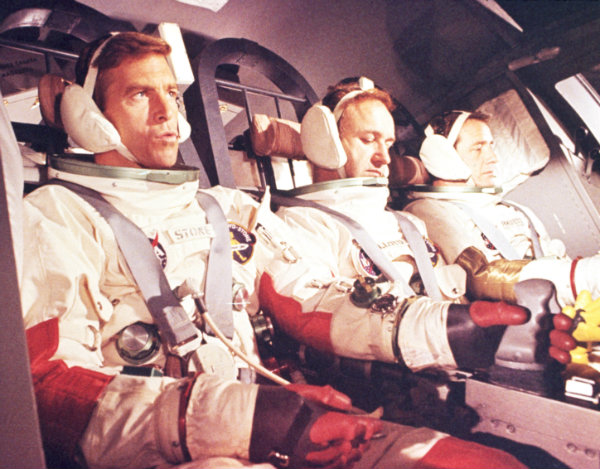
Still from Marooned, 1969
Rex Features
Source: FlightGlobal.com


























